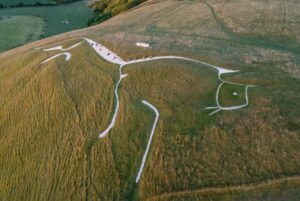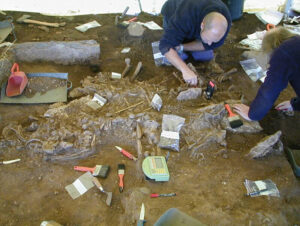These days, we tend to use the word globalization in the context of capitalism and popular culture.
But without a global trade network, it turns out that ancient Egypt couldn’t have produced its most enduring cultural trademark: mummies.
That’s the lesson from the latest research into the Egyptian embalming process, which evidently required ingredients only available from the Mediterranean, Africa, and possibly even Asia.
The scientists used bio-molecular analysis on 31 ancient ceramic containers to discover the exact tars, resins, fats and oils used by Egyptians, according to a paper published in the journal Nature on Wednesday.
The vessels come from a 26th Dynasty embalming workshop at Saqqara, which was embalming mummies 2,600 years ago.
It turns out that preparing a body for the afterlife required a global supply chain to gather antifungal and antibacterial materials from around the world.
“This is really the fascinating part of it,” Mahmoud M. Bahgat, a biochemist at the National Research Center in Cairo and a member of the research team, told The Washington Post. “If Egyptians went that far to get these particular natural products, from these particular countries and not other countries in between, it means they meant it, it was not just done as a trial and error…They knew about microbiology.”

Colored areas indicate the potential origins of the raw materials that were used for the preparation of balms and the mummification processes at Saqqara. Map: S. Lucas/Nature
Mummy embalming fluids: A complex recipe
The Nature study offers an abundance of new and fascinating details about how ancient Egyptians sourced their embalming materials.
Researchers believe that the natural bitumen, a tar-like substance, came from the Dead Sea. The Mediterranean offered Eygptians many useful plants, like ingredients from juniper and cypress trees, as well as resin from a flowering genus called Pistacia.
Molecular analysis of the vessels also came up with resin from elemi, a tree that grows in rainforests in Africa and Asia. The scientists also found dammar resin, derived from a family of trees found only in India and parts of Southeast Asia.

A woman walks toward Pyramid Djoser at Saqqara, near the embalming workshop used in the new research. Photo: Shutterstock
That last example is still uncertain, as molecular analysis still requires some guesswork from scientists. (Some of the results pointed to plants from the Americas, for example, which didn’t have a trade network with Egypt at that time.)
Regardless, the study’s result provide a new glimpse into the mummy-making process. It suggests that Egypt was far more connected than previously thought. One of the study’s co-authors believes that the ancient civilization had a global trade network that reached Egypt’s Gulf region all the way to southern India, he said in The Washington Post story.
“The industry of embalming was driving forward early globalization, because it meant you really needed to transport these resins across large distances — from southeast Asia to Egypt,” said study co-author Philipp W. Stockhammer, an archaeologist at Ludwig Maximilian University in Munich.






